This is not the final article – this is just the draft – be patient 🙂
How to care for your succulents! The colourful and beautiful, succulents are perfect plants for decoration. They can be a bit tricky to take care of, especially indoors. There are tips and tricks to make this process a whole lot easier, and these are some of them.
The Importance of Water
Even though they are notorious for being able to survive in dry conditions with small amounts of fluid, they should be doused less frequently but with lots of water. Replicating desert conditions (irregular, rich rains) can make these plants thrive. When watering them they should get completely and thoroughly soaked. They are to be watered again only when the soil has dried completely, usually around once a month if that.
In extreme weather conditions succulents can go into a dormant state in which they require either more or less water. Again, taking a closer look at the soil will be helpful in determining when they should be watered.
If it can be collected and stored, rain water is a lot more preferable than tap water, which contains high concentration of dissolved minerals that might harm plant’s soil.
Sunlight
Depending on the climate in which they evolved in, succulents’ need for sunlight varies. Most of them need half a day to a full day of sunlight. Placing them near the sunniest windows is required, however it shouldn’t be too hot as it can cause sunburns. Depending on the signs, plants can also have either too much or too little light.
If they aren’t getting enough light, they will appear to stretch at a 90-degree angle in an attempt to get as much sunlight exposure as possible. Leaving the plant in this condition can have major consequences. In this case they should be gradually transitioned towards a stronger light, as they will be especially prone to sunburns.
When getting too much light, plants will become off colour, while also being in danger of scorching. Scorching has long lasting effects, and will leave the plant with a sunburn mark for the rest of its life.
Soil and Potting
A strong foundation is most important for having a successful, striving succulent. A well-draining soil is highly important as these plants do not like to sit in damp or soggy soil. They should be planted out of low areas where water can easily collect. Potting soil should be combined with something that drains quickly, like volcanic rocks or sand.
Best pots for succulents are the ones with drainage holes at the bottom. Ceramic and terracotta pots are better than their plastic variants as they provide better drainage and airflow. For hot environments, ceramic is the best choice.
Pest Control
Bugs can be quite a headache, but with proper care the chance of them appearing is very low. Providing succulents with proper air circulation can prevent infestations. Keeping the soil wet for a long time can attract gnats. Removing dead leaves means that the bugs won’t have a place to hide and breed in, and it also helps in preventing mold. If pests do appear, they should be sprayed with rubbing alcohol diluted 50% in water.
Growing succulents is fun and simple, and with these tips they are sure to keep healthy and strive to their full potential.
So how do you take care of succulents?
How often should you water a succulent?
You rarely need to water the succulent but ultimately it will depend on the environment it is in. Its not all about heat either because a succulent outside in the cold if getting hit by wind constantly can rapidly dry out and the same goes for the soil. You will get used to the colour of the soil when wet, damp and when bone dry. Ideally do not leave it so long that the soil gets a gap down the side of the pot as this will make it harder to accurately soak the soil and also put the roots under excess stress with the contraction and then expansion of the soil.
It is best to use spring water or rainwater but that is not always possible. Plants will grow a little better with spring water and rain water than they do with tap water or distilled water just because its less harsh for them and contains none of the chemicals used to keep it clean like chlorine. Tap water is fine in general but it is better tepid so let it stand in a bucket or bottle unsealed untill the next time you need it to let some of the chemicals dissipate. Also tap water comes in two forms, soft and hard and its the latter that is best as it contains more minerals like magnesium and calcium unlike soft water which contains only sodium ions so avoid this.
My old bottle of still water filled with tap water and left for a day or 2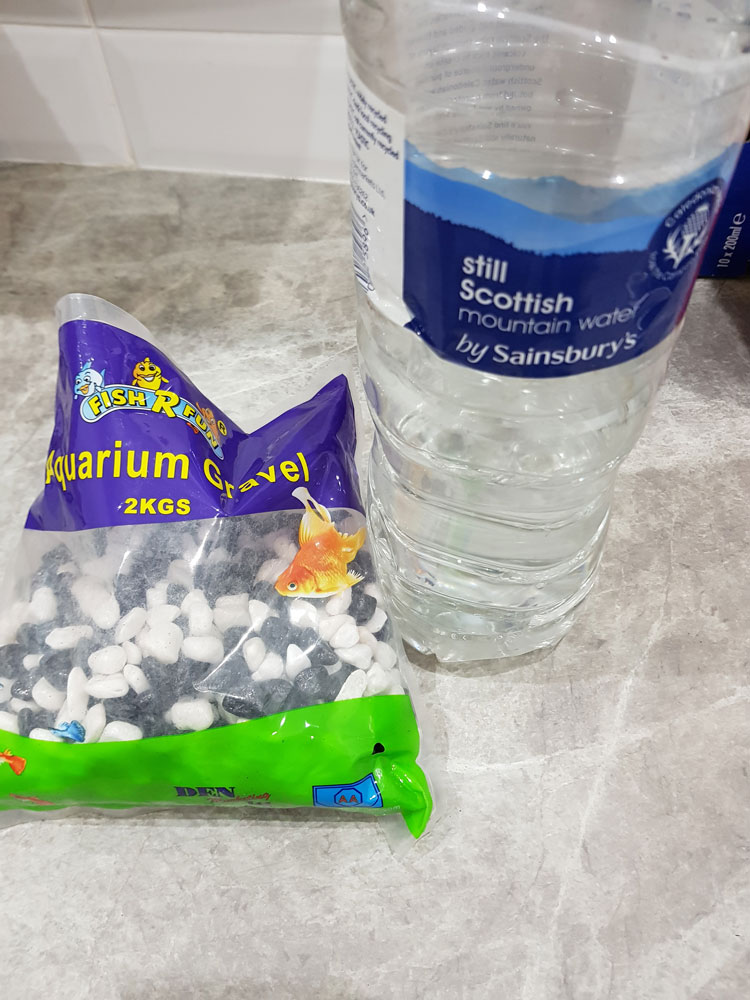
How to water succulents?
The best way to water succulents is similar to cacti in that its best to water once thoroughly than a little now and then. This is why when we plant succulents we put gravel/stones at the bottom of the pot to help drainage and or compost with plenty of gravel in. The best way is to let the soil get dry but not so dry that a gap starts to appear down the side of the soil i.e separating from the pot, then give the succulent a really good soaking until the water pours out of the bottom drainage hole. Make sure you do not let the plant/pot sit in water as they do not like this at all and can make the roots rot as well as suffocate them. So empty the tray straight away.
two of my ceramic pots with drainage hole and gravel
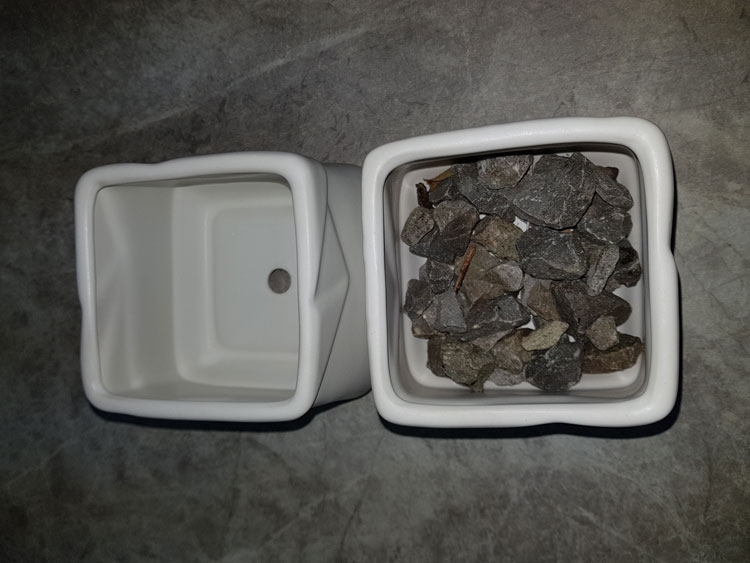
only filled enough to cover the hole

aquarium coloured pebbles placed on top of soil to retain moisture
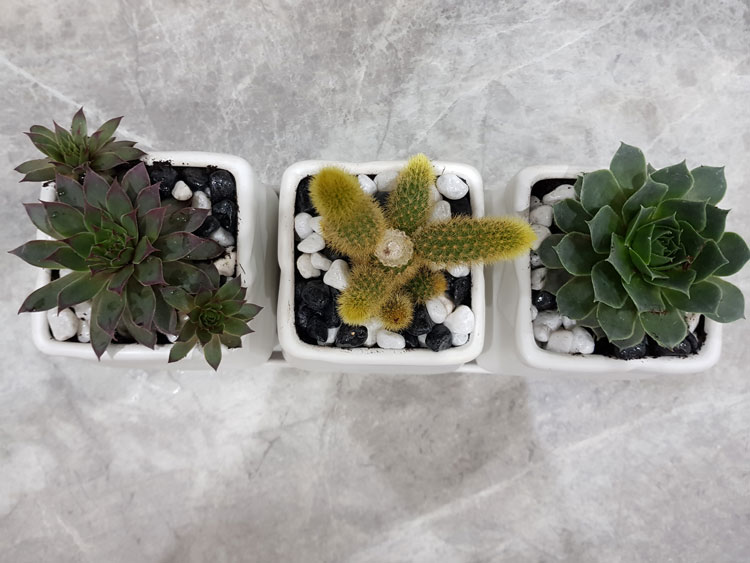
Are succulents easy to keep alive?
If you are one of these people that cannot keep a simple house or garden plant alive then maybe the succulent species is what you have been looking for. They need very little attention, a small amount of soil mixed with stones/sand/grit and very rarely need to be watered. In fact as stated above they do not actually like a lot of water at all and so you literally just need to wait until the soils so obviously dry then give a good soak and drain. Keep them in as bright a light as possible to help with photosynthesis just like any other plant but not so that they are getting scorched/burnt. They do not need a great deal of soil or feed to stay alive but because of there preferred watering schedule of soak and drain they do need to be given a simple nitrogen type fertiliser/feed found in any supermarket. This is because the few nutrients in the soil get washed away during the soak/flush/drain.
Can succulents survive inside?
Indeed they can, not many people realise the fact that cacti are also a type of succulent and we all know how hardy a cactus can be. Just like a cacti a succulent can horde water very efficiently with its thick fleshy leaves and also tends to grow horizontally across the soil surface around it which helps shield the sun from the soil to keep its moisture longer. They do not have to be in a particularly sunny spot and if you cant get it any direct light at all and it starts to go pale you can just use a min flexible LED lamp on it to give it a boost.
What succulents grow well indoors?
Here is a brief overview of some of the most popular indoor succulents, in general the greener types fair better indoors like the Haworthia and Gasteria varieties. Succulents with bright colours tend to suffer if they do not get good light.
Echeveria
Usually a thick leaved rosette in appearance that cope well with low light conditions. This is not just one plant this is a species of around 150 types. Originating in central america they are used to low water and dry conditions which is why the watering method described above is quite important for the plants health.
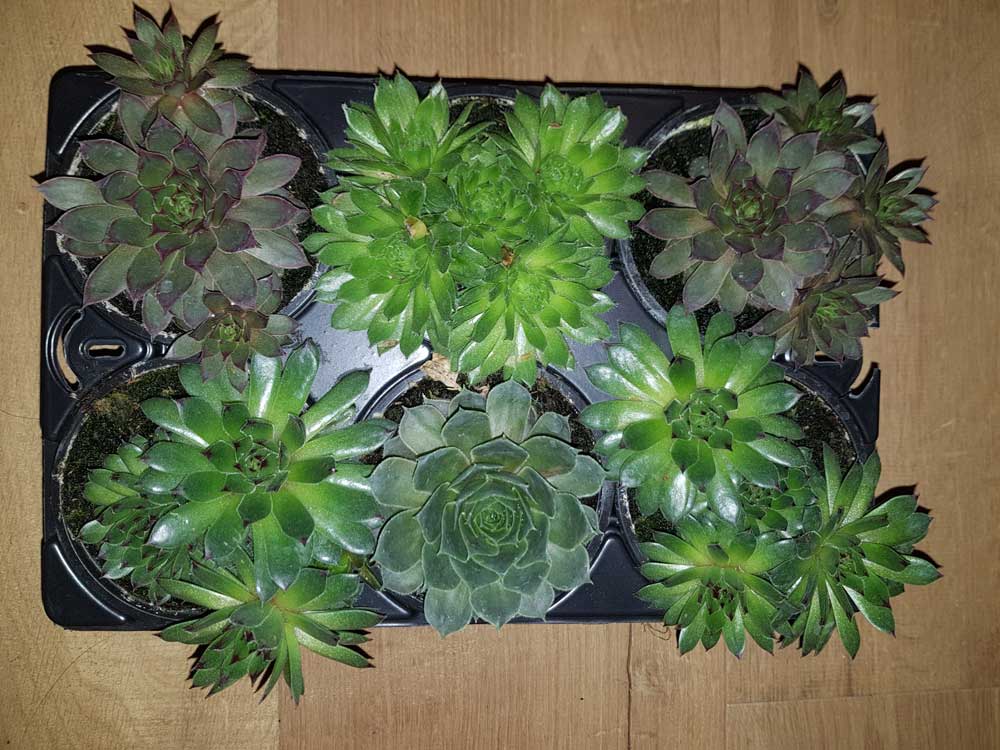
Panda Plant
This plant is from the Genus Kalanchoe which was native to Madagascar. The dark edge of the leaves is where it gets the name Panda from and is sometimes referred to as pussy ears or chocolate soldier. There are again over 100 varieties of this strain and this ones size is really only limited by the pot size or environment that it is placed in, it can grow several feet in the wild.
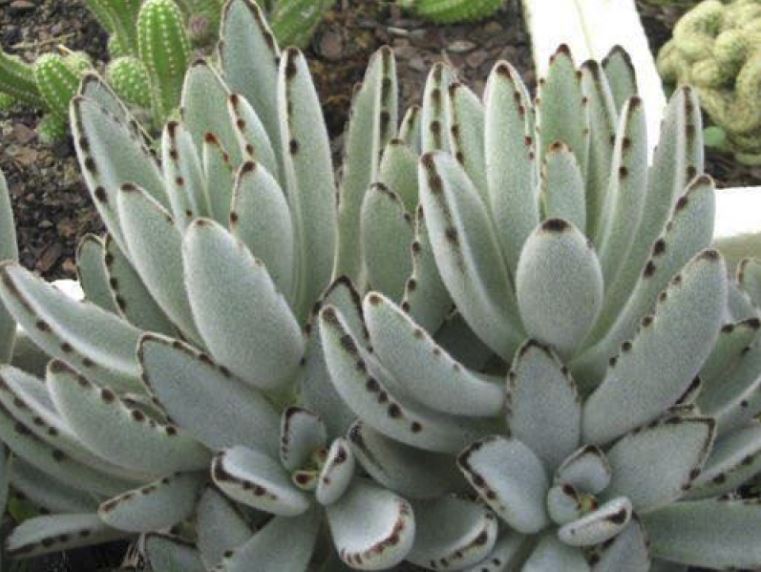
Jade Plant
Not many people have actually heard of succulents but if I was to say “lucky plant” or “money tree” or “money plant” you might recognise that description more and that is actually what a Jade plant (crassula ovata) is. Like most succulents its an evergreen plant with thick fleshy leaves and depending on the type can have small white or pink flowers.
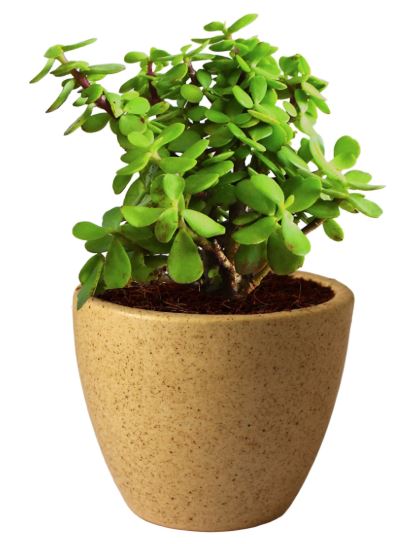
Aloe Vera
Im sure everyone has heard of Aloe Vera, most likely when shopping for hair shampoo and skin products. It has many medicinal properties and Aloe Vera is actually a succulent. Again like the cacti it is used to dry desert conditions and should be watered very infrequently to prevent rot. If your ever caught out in the desert, sun protection/cream is one of this plants uses, so grab a leave, split it open and rub on your skin.
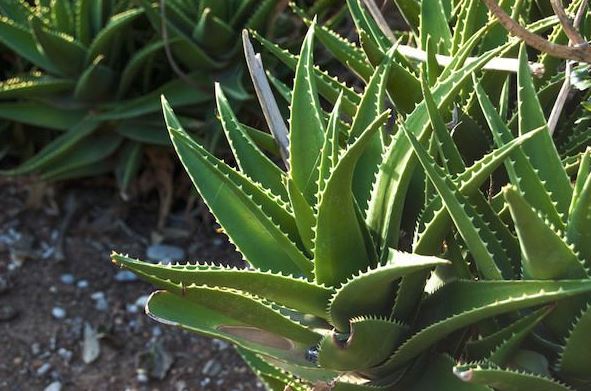
Do succulents need sun?
Like any plant your succulent will need sunlight but it is not as needy as most and you can certainly get away with it on a shady window ledge or anywhere where it can at least get some sunlight. It need not be in a glaring sunspot, in fact quite the opposite as that would dry it out to fast and potentially burn the leave if not rotated. Long story short these plants do not need much light at all and you can always backup the shorter winter days with a cheap flexible LED light on a timer to give it an extra boost.
Can succulents grow in the shade?
Do succulents survive winter?
How do you grow succulents from cuttings?
If you are going to clone few of these then it would be wise to have some basic items to help with the process. These include a low top propagator (a high top would take longer for the plant to warm up), a scalpel, a rooting hormone gel like Clonex & some peat pellets. Everyone has different ways of doing this process but I find this method has the highest success rate and is easy to manage.
Step 1 – prepare the soil
Soak the peat pellets in water that has been left to stand for about 24 hours, they will expand quite fast and be fully soaked in a couple of minutes. When they are soaked cup the pellet in your hand to retain its shape whilst you gently squeeze the excess water from it, be sure not to squeeze all of the water from it only enough so that it is not dripping.
Step 2 – take the cutting
The scalpel should ideally be sterilised so you can use 1 part bleach to 9 parts water and rinse off all of the solution, or use an alcohol swab and be sure to rinse that well too, this kills all bacteria which would infect the plant at the point where you make the incision. Some succulents are very flat like a rosette and you may struggle to take a traditional cutting from this type of succulent. If however your rosette succulent has offsets then you can carefully separate that growth from the main stem and shave it off with the scalpel, this will give you a whole new miniature plant, it should have at least 2 leaves and also doesn’t need too many leaves as that just gives the clone more plant matter to cater for whilst acquiring nutrients and water which will be quite taxing for it early on due to little or no root system. You will come accustomed to the right balance of cutting size and leaf count when you see which ones survive, which ones die and which ones root first.
Step 3 – apply root hormone
You should pour some of the root hormone gel out into a separate container, something with depth but also not to wide as you want to be able to dip the stem right into the solution, usually a small aerosol lid is an ideal size or even an egg cup. Dip the stem of the cutting into the gel and let it absorb some just for a few moments. Take a small nail or thin screwdriver the width of the cutting stem and place into the peat pellet to just short of the depth of the length of your cutting, this allows the stem to be placed in the pellet without bending it which inhibits the water uptake and can damage cells making it a longer process for it to root, it also helps stop all of the gel being wiped off when you place it. Be sure not to have the gel to thick or left on the outer leaves as it can cause rot. Gently squeeze the pellet sides only to make sure the soil is pushed up against the stem all the way around so that it is not exposed to the air which would dry out the root area.
Step 4 – Leave to nature in the propagator
By now your cuttings/clones are in the peat pellets and placed evenly apart in a propagator, if your propagator is one with air vents then these should be closed. What we are trying to do is let the plants breath and warm there environment up to the point where ideally the top of the propagator fogs up with condensation, this is good sign your temperature is right. They can be left like this for a few days, you do gradually need to let more air in so as to not let rot/damp set in with it being a humid environment. A humid environment is not ideal for some plants but at the cutting stage it helps the plant get through the early days as it can draw moisture from the air with its leaves much easier.
Step 5 – when are the clones ready?
You will see roots pop out of the sides of the peat pellets which is an obvious sign of success, some take much longer than others and you might not see roots but you can still tell if its alive by the look of the leaves, droopiness is a sign they are struggling to get moisture.
Are succulents poisonous?
In general no, most succulents are pretty safe, with some obvious ones like “Aloe Vera” that can actually be eaten and is used in many skin and hair products also but be aware some Aloe contain saponins and anthraquinones which can cause sickness and vomiting for animals so even Aloe varieties may be a risk to pets and definitely something that you would keep out of the reach of babies.
Kalanchoes can make animals sick of they eat the leaves so these should be kept out of the way, they are not fatal but it wont be a pleasant experience for the animal.
Euphorbias are also poisonous, they contain a white sap that can irritate the skin and cause a rash, again not fatal but something to avoid.
Jade varieties can cause vomiting, depression, and in-coordination in animals.
Silver Dollar varieties can make animals experience vomiting, an upset stomach, and (rarely) tremors and felines can also show signs of drunkenness after eating.
Which succulents are safe for animals?
- Blue Echeveria
- Burro’s Tail — also known as Horse’s Tail, Donkey’s Tail, Lamb’s Tail
- Ghost Plant — also known as Mother of Pearl
- Hardy Baby Tears
- Haworthia
- Hens and Chickens — also known as Chickens and Hens, Mother Hens, Chicks
- Maroon Chenille Plant
- Mexican Firecracker
- Mexican Rosettes
- Mexican Snowballs
- Painted Lady — also known as Copper Rose, Maroon
- Plush Plant
- Tree Cactus
- Wax Rosette




Leave a Reply